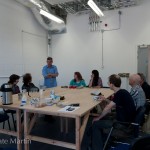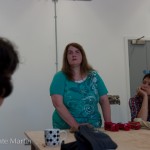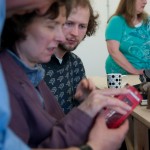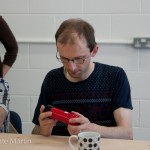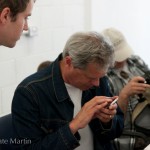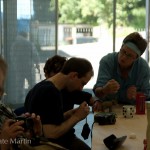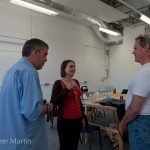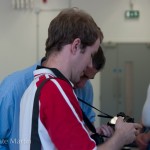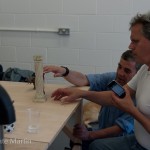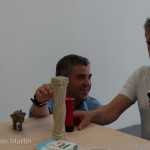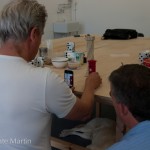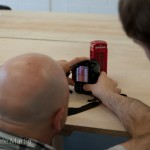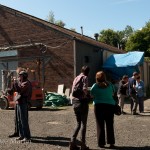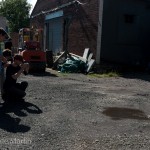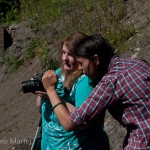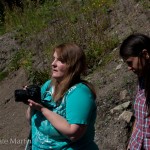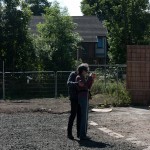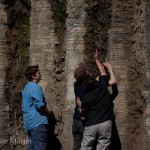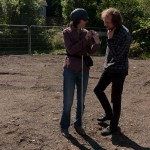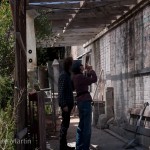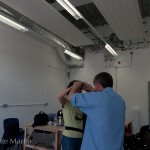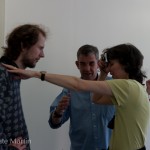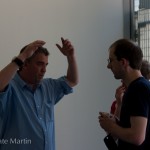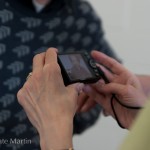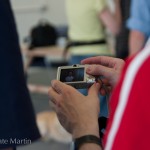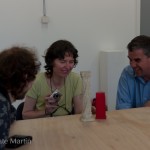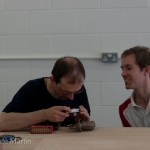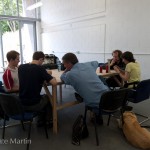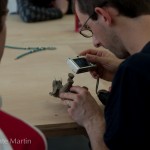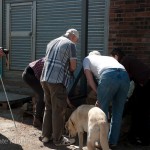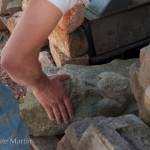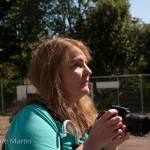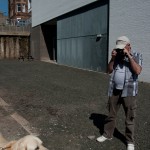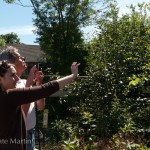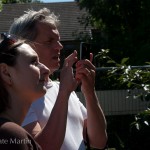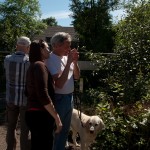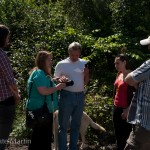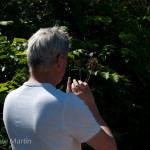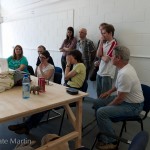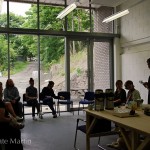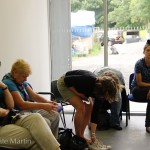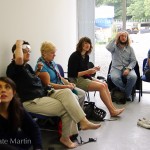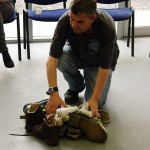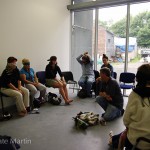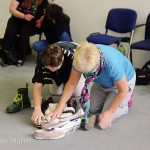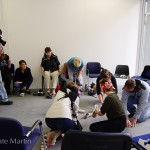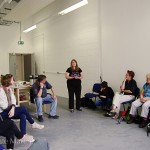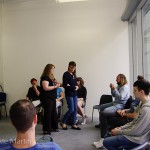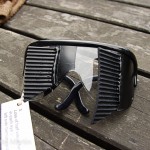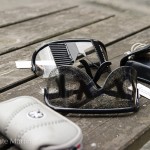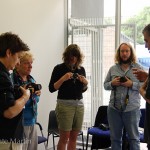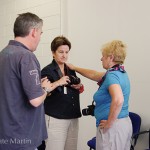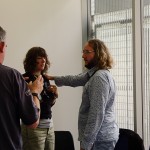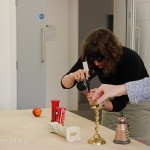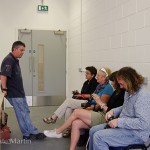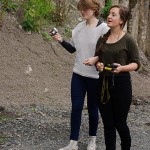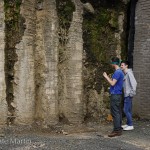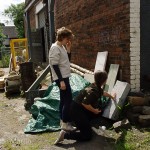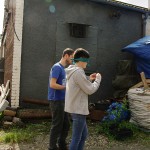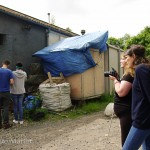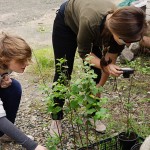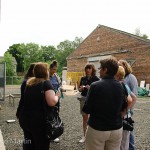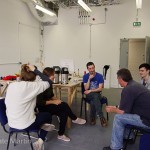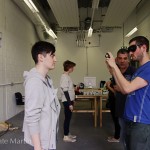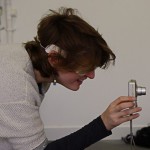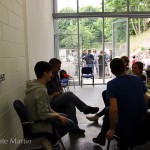Contemporary Art Exchange worked in partnership with Edinburgh Sculpture Workshop and artists Andrew Follows and Rosita McKenzie to deliver two photography workshops during the two week run of the Through the Looking Glass, Dimly exhibition. Each workshop ran from 11am-4pm and made use of the interior and exterior of Edinburgh Sculpture Workshop’s brand new facility in Edinburgh’s Newhaven area. The aim of each workshop was to share both Andrew and Rosita’s unique photographic techniques and skills with participants and guide them to use these techniques in their own image making.
Workshop for Non-Sighted People
Wednesday 8 August at Edinburgh Sculpture Workshop
The first workshop was specifically designed for people with vision impairment and all levels of photographic experience. Participants began by familiarising themselves with their digital cameras or i-phones. We then divided the participants into two groups where they were led by either Rosita or Andrew in sessions in outdoor and portrait photography respectively.
Many of the participants who attended had some experience with photography in the past through involvement in the Revealed photographic group that Rosita helped establish in 2009. The workshop provided them with an opportunity not only to build on previously acquired skills, but to come together again in a supported, creative environment that encouraged experimentation and learning new skills not just from their previous mentor Rosita, but also their new international contact Andrew. And for those who’d had no experience of photography before, the medium has now opened an unexpected creative gateway.
To see a selection of participants’ photos from the Wednesday workshop click on the name below:
Fiona Powell
Peter Davy
Alan MacIntyre
Andreas Gartner
Workshop for Sighted People
Saturday 11 August at Edinburgh Sculpture Workshop
The second workshop was open to sighted people to attend, again at all levels of photography. The workshop, as for the Wednesday workshop, not only introduced participants to alternative ways of using camera equipment, but also encouraged sighted participants in particular to reconsider the idea of what the visual means to them – for example, is it necessary to use physical sight to create a visual image?
Andrew began this workshop with a blind-folded icebreaker exercise to introduce participants to the experience of being blind. Rosita and her assistant Caroline then followed this by pairing participants up and demonstrating how to guide each other around the space safely in preparation for the following tasks: outdoor and portrait sessions using vision impairment simulation specs.
To see a selection of participants’ photos from the Saturday workshop click on the name below:
Brian Hill
Buffy Gorilla
Sam Danzig
Ros Hunter
Margot Miller
Rebecca
Alexander Neuman
“Very enjoyable and informative day. Many thanks.”
“Great – so much fun and I learnt a lot. Great environment and group as well.”
“A new take on portrait photography. [I’ll now] look at things from all senses.”
“[I have] Appreciation for my sight but also appreciation of how I can potentially be more creative/imaginative if I take pictures without it.”
- Workshop for Non-Sighted People
- Workshop for Sighted People

